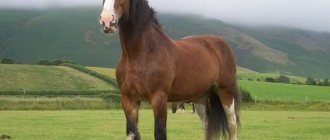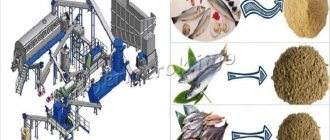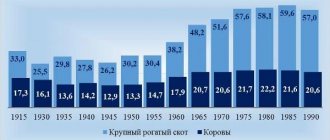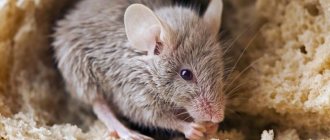Poultry farming has become one of the most profitable and important sectors of the Russian economy, since bird breeding is a relatively simple species. A species is an evolutionarily established set of individuals, characterized by a single ... agriculture, capable of providing the population with nutritious and healthy products - eggs, meat and fat, as well as providing raw materials for recycling - fluff, feathers and droppings.
Poultry farming is one of the areas that makes a significant contribution not only to the country’s economy, but also ensures its food security by supplying markets with high-quality animal protein necessary to maintain the health of the human body.
Industrial poultry farming in Russia
In Russia, as in other countries of the world, the poultry industry is one of the leading ones, as it provides Russians not only with high-quality natural food products, but also with raw materials for industrial processing (feather, down and droppings). Every year there is an increase in products produced by the poultry industry. If we consider the percentage ratio, then in 2016 the amount of poultry meat and eggs supplied to the Russian market increased by five percent compared to 2014.
Thanks to breeding work aimed at improving captive characteristics and breeding new breeds, the poultry industry in Russia is developing at a rapid pace. This became possible thanks to the introduction of new technologies relating to feed production and the poultry feeding system itself on farms.
Currently, seventeen egg breeds of poultry and eleven meat breeds are raised in the country's poultry farms. The leaders are breeds bred in Russia. If you add up all the poultry farms in the country, then in total it turns out that they contain three hundred sixty to three hundred eighty million different breeds of poultry. And these figures are growing every year. Based on the above information, we can say that the history of the development of poultry farming in Russia, from the tenth century to the present day, has undergone many changes, which indicates the confident development of the poultry industry, which in the near future may become a leader among other agricultural industries.
The first mention of domestic chicken appeared in the tenth century. This became known thanks to archaeological excavations carried out in the country. Archaeologists have found the remains of birds and their images on scrolls and dishes. The first book on poultry farming was published in 1774. It clearly outlined information on breeding poultry and developing new breeds.
The next book devoted to this topic was published in 1790. I.I.Abozin is considered the most honored poultry breeder of that time, who wrote many books and articles on poultry breeding. It was he who first classified chicken breeds. This classification is still used today.
From the fifteenth to the nineteenth centuries, poultry farming was considered the most backward agricultural sector. At that time, poultry was bred by peasants; they raised it mainly for their masters. But starting from the sixties of the 19th century, new productive breeds of birds began to be acquired abroad, which became a new milestone in the development of this industry.
Since 1913, the poultry population began to increase sharply. In 1914, with the outbreak of the Civil War, poultry farming suffered significantly. From 1918 to 1920, the industry was actively restored. From 1874 to 1953, many discoveries were made in the field of poultry farming, which helped this industry in its further development.
Currently, seventeen egg breeds of poultry and eleven meat breeds are raised in the country's poultry farms. The leaders are breeds bred in Russia. If you add up all the poultry farms in the country, then in total it turns out that they contain three hundred sixty to three hundred eighty million different breeds of poultry. And these figures are growing every year. Based on the above information, we can say that the history of the development of poultry farming in Russia, from the tenth century to the present day, has undergone many changes, which indicates the confident development of the poultry industry, which in the near future may become a leader among other agricultural industries.
The first mention of domestic chicken appeared in the tenth century. This became known thanks to archaeological excavations carried out in the country. Archaeologists have found the remains of birds and their images on scrolls and dishes. The first book on poultry farming was published in 1774. It clearly outlined information on breeding poultry and developing new breeds.
The next book devoted to this topic was published in 1790. I.I.Abozin is considered the most honored poultry breeder of that time, who wrote many books and articles on poultry breeding. It was he who first classified chicken breeds. This classification is still used today.
From the fifteenth to the nineteenth centuries, poultry farming was considered the most backward agricultural sector. At that time, poultry was bred by peasants; they raised it mainly for their masters. But starting from the sixties of the 19th century, new productive breeds of birds began to be acquired abroad, which became a new milestone in the development of this industry.
Since 1913, the poultry population began to increase sharply. In 1914, with the outbreak of the Civil War, poultry farming suffered significantly. From 1918 to 1920, the industry was actively restored. From 1874 to 1953, many discoveries were made in the field of poultry farming, which helped this industry in its further development.
Over the next ten years, large poultry farms began to be created, which were aimed at raising chickens and breeding new breeds. Since the thirties, poultry research centers have been created throughout the country. Their creation entailed the intensification of the development of the poultry farming industry.
When the Great Patriotic War began, the poultry industry again had to face huge losses. By 1955, the industry began to recover, and nine years later scientists began to note the prerequisites for intensive development. Since 1961, the poultry industry has been replenished with new breeds imported from Europe, and since then active hybridization has begun. Four years later, the hybrid bird began to bring good growth to the entire economy of the country.
Since 1971, the material and technical base of the country's industrial poultry farming began to strengthen. They began to use new feed production technologies and equipment, new breeds were developed, and the number of poultry increased. And in 1990, production turnover reached such a pace that this industry became one of the leading among other agricultural industries.
Now the improvement and modernization of industries is proceeding along a scientific line. For this purpose, both scientists and business executives have been involved. Poultry farmers hope that within a couple of decades the poultry industry will become the leading agricultural industry in the country and will help Russia overcome the shortage of its own food raw materials, such as meat and eggs.
Prospects for poultry farming
The future of poultry farming is private poultry farming enterprises that are well equipped both technically and economically. Having a sufficient technical base and a sensible marketing approach, a poultry farm can produce up to hundreds of products: from banal meat products and semi-finished products to dietary and baby food.
Investments and clear planning of funds in the poultry industry can bring excellent dividends, despite the initial “frightening” prospect.
Poultry farming is the future of Russia; it is an area of agriculture that is at the starting point of development in our country. But this makes the prospects for poultry farming even more attractive.
Development of poultry farming in Russia
Due to agricultural reforms in 1990, domestic poultry products lost their popularity due to the uncontrolled growth of imports from abroad. Since 2000, the current government began to correct the mistakes of its predecessors by giving poultry farming the green light. The prerequisite for this was the founding of the All-Russian Union of Poultry Farmers, which united all enterprises that were in one way or another related to the poultry industry.
And by 2010, the volume of chicken meat supplied to markets increased by two thousand eight hundred and sixty tons. Imported meat decreased by seventeen percent. The basis of Russian poultry farming is its industrial enterprises for growing poultry.
From 2006 to 2010, the industry attracted two hundred billion rubles of investment, thanks to which productivity indicators and egg production increased. Now the poultry industry is striving to increase its competitiveness by mastering innovative developments in the processing of meat and eggs. The number of enterprises producing a wide range of meat and egg products has also increased. In recent years, the percentage of supplies to the duck and turkey meat markets has been significantly increased.
Regions that were able
In 2005, thanks to the Vologda, Kostroma, Belgorod, Tyumen, Novosibirsk, Udmurt and Altai regions, it was possible to stop the protracted industry decline in poultry farming. The areas where this industry is located in Russia were largely determined during the revival. Also, factories located in the Leningrad, Smolensk, and Sakhov regions begin their work practically from scratch. They gave a significant increase in the production of meat and eggs. The Irkutsk and Smolensk regions were among the first to make the transition to extruded feed, which helped reduce the feed conversion ratio while increasing the egg production of birds by almost ten percent.
The Krasnoyarsk Territory and the Kursk Region showed a tendency to increase meat production by almost eight percent. Arkhangelsk, Pskov, Smolensk, Ryazan and other regions practically stopped producing meat and began to specialize in the production of eggs. The Kurgan region is starting to breed geese and ducks. Bashkortostan specializes in breeding turkeys - white and black. Today, Bashkir poultry farms raise five different breeds of these birds, which provide a large share of the industry’s total annual production.
The Moscow region is engaged in breeding guinea fowl. It is also planned to organize the breeding of this type of poultry in the Orenburg, Bashkir and Volgograd regions. Quails are grown in the Moscow region and Stavropol region. The Rostov region is famous for turkey breeding. If we talk further about poultry farming in Russia, it should be noted that incubation stations were opened in the Chelyabinsk and Tomsk regions. The plan is to supply poultry farming complexes with almost sixty million chickens per year.
Egg farming
Egg production is one of the most important parts of the agro-industrial complex of our country, providing the population with natural, high-quality animal protein. In order for this area of poultry farming to grow and develop, it is necessary to monitor the increase in the specific gravity of eggs that are processed to subsequently obtain high-quality liquid egg products.
Compared to other countries, Russia still produces very few such products, so experts suggest starting to produce fermented protein and yolk and egg products with various additives. After all, the egg is a storehouse of useful elements that can be obtained using the extraction method. Primarily these are lysozyme and lecithin, which are used in the food, cosmetic and pharmaceutical industries.
In order to overcome the crisis situation and maintain growth in poultry production, it is necessary to increase production efficiency by introducing new technologies and reducing unproductive costs. It is also necessary to ensure the rhythmic operation of poultry breeding enterprises, because the success of the poultry farming industry as a whole will depend on their work.
Poultry equipment
Today it is not difficult to buy both imported and domestic equipment for industrial poultry farming. Its quality and productivity directly affect the profitability of the enterprise. Farms predominantly purchase equipment from Russian manufacturers, which is associated with a lower cost, the ability to purchase equipment on lease, with state-subsidized loans, without high delivery costs. Foreign models are of higher quality and have a corresponding price.
The most famous manufacturers of domestic equipment
Industrial incubators
This category includes devices with the ability to simultaneously lay more than 5 thousand eggs. Most models are designed for breeding all breeds of poultry: chickens, geese, ducks, turkeys. The devices are divided into incubation (preliminary) and hatcher cabinets. With traditional technology, the first eggs are kept for up to 18 days, after which they are ovoscopic and placed in hatcher trays for 3 days, where the chicks are born. Some models combine incubation and hatching of young animals.
The most common industrial incubators: IUP-F-45, Stimul (50P, 18I), RP 03-033, IUV-F-15, IFKh-500. The price of products depends on the functionality of the design, material of manufacture and mainly on capacity. An incubator for 2-3 thousand eggs can be bought for 60-150 thousand rubles; one designed for simultaneous hatching of 45 thousand chickens costs more than a million rubles.
Floor and cage equipment
In poultry farming, about 75% of foreign floor equipment and about 60% of cage equipment are used. This is due to the fact that cage technology for keeping poultry is more common in our country. The advisability of choosing a growing method depends on various reasons, both have pros and cons.
The most famous systems for floor-mounted poultry farming: "Roxell" (Belgium), "Ronar B.V.", "Chor-time" (Holland), "Facco" (Italy), "Valko" (USA), "Nezhinselmash" (Ukraine) Domestic kits: TsBK, ONChB and OBR-00.000. They include in the package:
- bunkers, conveyor loaders;
- feed dispensers with 4 lines (up to 500 feeders);
- drinking bowls - 5 lines (number of nipples up to 2 thousand).
When using cage technology for keeping broilers, battery cages are used: BKM-3, KBU-3, KVI-1M, KP-8L, KP-25, TBCB, TBTSU, TBB of Russian production. To a lesser extent, Italian equipment (“Valli”), German (“BigDuchman”, “Hartmann”), Dutch and Spanish. Batteries can be single or multi-tiered. At the same time, in 3- and 4-tier sets, the yield of meat products increases by 2.5–3 times compared to floor poultry housing in the same area.
Comparative characteristics of several common battery models
In addition to the main types of equipment described above, the technological process, depending on the scale and specialization, uses equipment for feed production, slaughter and poultry processing, egg sorting machines, refrigerators for storing products, air conditioning and ventilation systems.
Breeding innovations
Scientists involved in breeding new breeds of poultry believe that in a couple of decades they will begin to use genetic engineering in poultry farming. And to prepare for this, it is necessary to preserve the biological diversity of rare and endangered breeds.
Compared to other countries, Russia still produces very few such products, so experts suggest starting to produce fermented protein and yolk and egg products with various additives. After all, the egg is a storehouse of useful elements that can be obtained using the extraction method. Primarily these are lysozyme and lecithin, which are used in the food, cosmetic and pharmaceutical industries.
In order to overcome the crisis situation and maintain growth in poultry production, it is necessary to increase production efficiency by introducing new technologies and reducing unproductive costs. It is also necessary to ensure the rhythmic operation of poultry breeding enterprises, because the success of the poultry farming industry as a whole will depend on their work.
Technological process of poultry breeding
This business is the most promising direction for farms, since it requires much less financial investment than cattle breeding, and does not involve renting large agricultural areas. This is an “early ripening” production, little dependent on weather conditions. What breeds of birds to breed, everyone decides for himself, depending on interests, local conditions and demand.
Regulatory documents to refer to:
- RD-APK 1.10.05.04-13 - Methodological recommendations for technological design of poultry enterprises.
- Order No. 104 of the Ministry of Agriculture of the Russian Federation dated 04/03/2006 - On approval of veterinary rules for keeping birds at closed poultry enterprises (poultry farms).
- Order of the Ministry of Agriculture No. 103 of 04/03/2006 - “On approval of veterinary rules for keeping birds on private backyards of citizens and open poultry farms.”
Chickens
If the farmer's goal is meat production, then broiler breeding would be the best choice. Advantages: a chicken coop requires a small area, the period of growing marketable poultry is about 2 months. The main conditions: compliance with the feeding ration, provision of light and warmth. The business is based on a one-time purchase of chickens and subsequent incubation to maintain the flock. The main activities of the farm include several technological processes:
- growing and fattening broilers;
- regular incubation of chickens from eggs;
- sale of meat and by-products;
- production of our own feed.
Broiler maintenance
In practice, two technologies for breeding meat chickens are used: floor and cage. The choice depends on the purpose, the size of the available premises and the availability of funds. Keeping chickens in cages (batteries) gives meat yield per 1 square meter. m. is 30–40% more and provides 20% more profit. However, cellular equipment is more expensive and pays off on average in 3–4 years, while floor-standing equipment takes 2–2.5 years. In turn, with floor maintenance, the costs of communications and electricity increase.
Basic set of equipment for raising chickens for meat:
- incubators for hatching chickens;
- fan heaters (heaters);
- bunkers for placing mixed feed;
- drinking bowls (can, nipple);
- automatic feeders;
- lamps.
The room must have a ventilation and water supply system. With floor technology, it is necessary to install a lattice, mesh, or slatted floor for deep bedding. When kept in cages, you will have to buy special equipment - multi-tiered cage batteries.
The main condition for success in poultry farming is compliance with the feeding regime. The share of feed in the cost of 1 kg of chicken meat reaches 75%. Main ingredients:
- wheat - 66–69%;
- corn - 33–35%;
- Sunflower meal - 20%;
- vegetable oil - 3–5%;
- meat and bone meal - up to 7%;
- vitamin, bioactive supplements.
On private farms, chickens are fattened for 45-55 days, with an average weight at slaughter of 2.2 kg. The maximum load per person is about 4.5 thousand heads, for two workers up to 10 thousand heads.
Breeding chickens of egg breeds
Chicken eggs are in constant demand, their consumption is approximately 290 eggs per person per year. Chickens of foreign crosses “Hisex Brown”, “High Line”, “Lohmann” are distinguished by good egg production. Many Russian breeding farms are engaged in their breeding.
The products of laying hens are obtained already in the 5th month of keeping, the average lifespan is 1 year. Each chicken produces 180–200 eggs per year, while feed consumption is about 36 kg. Profitability depends on the feed used; it increases with our own production of feed and reaches 20%.
Geese
Goose meat is in demand everywhere, but there is not enough of it in stores. The weight of a goose at the age of 60 days reaches 4–5 kg, and by the ninth month they reach sexual maturity and gain weight up to 6–7 kg. In addition, with special fattening, a delicious product is obtained - liver, the weight of which can be 0.5 kg. To successfully raise geese, you need to consider the following features:
- Large birds require a significant area for keeping. In a room S=2 thousand m2 you can keep a herd of about 3,000 heads (the norm is 1.5 geese/m2). There should be walking areas with a pond on the street.
- The average lifespan for keeping geese is 4 years. Sexual maturity occurs at the age of 240–270 days. Therefore, an annual renewal of the herd by approximately 30% is required through repairs (incubation and purchase of day-old young animals).
- When growing, combined feeds are used: dry concentrated and succulent green feeds. In the summer, if pasture is available, geese completely satisfy their food needs from grass. Its optimal size is about 6 acres for 3-4 birds.
- The profitability of breeding geese is approximately 20-22% without taking into account the initial investment in equipment, purchase of premises and land rental. The cost of feed is 50-55% of the price of meat.
To ensure the technological process, you will need to buy an industrial incubator. Goslings need heating for the first 4 months. Then they can live in an unheated room. Availability of water for drinking and water procedures is required. Geese are slaughtered 3-4 times a year.
Ducks
Almost only farms and small agricultural enterprises are involved in raising ducks. They grow quickly compared to other birds, are unpretentious and are little susceptible to disease. When raised for meat, Mulard ducks (a hybrid of the Indian duck and the Peking breed) have recently been increasingly used. They produce meat with a reduced fat content and are suitable for fattening to produce foie gras (liver). Duck breeding technology is not very complicated.
- To accommodate 200 birds you need a room of about 200 square meters. m. They use both floor and cellular technology. A combined method with cage placement after reaching 30 days of age is often used.
- The optimal fattening period for duck slaughter is 52 days. If a balanced diet is followed, by this age they gain a weight of 2.8–3.4 kg.
- The best feed is mixed feed that includes wheat, corn, sunflower and soybean cake with the obligatory addition of chalk, vitamin and mineral supplements (premix).
Feed conversion reaches 2.6–3.6 kg with an average consumption of 8 kg per head. The cost of 1 kg of weight is 52–54 rubles, the wholesale price is approximately 70 rubles/kg. The profitability of duck meat production is from 28 to 32%. One kilogram of packaged and ready-made foie gras liver costs about 4,000 rubles.
Turkeys (turkey)
This bird species has very good prospects for breeding. Over the past 5 years, turkey meat production in our country has increased annually by 30%, and competition in the domestic poultry market is still small. Dense, tasty meat with low fat content is in good demand among consumers. Most of it came from abroad, but with the introduction of sanctions, imports practically disappeared from store shelves.
The correct name for this bird is domestic turkey. The name used for the male is turkey (by analogy with a rooster), and for the female it is called turkey. When it comes to breeding poultry for commercial purposes, the term turkey is used.
In terms of poultry meat, turkey in many countries is a big competitor to broiler. Just like chickens, it is raised using floor and cage technology. Breeding requires industrial incubators, equipment for mechanized feeding, watering and litter removal. This is a very large, fast-growing bird, so when keeping it you need to take into account the following features.
- The best results are achieved by integrated production technology. Up to 2 months of age, turkey poults are kept in cage batteries (for example, KBM-2). By this age, they gain weight of about 3 kg and begin to deform the floor of the cage.
- The second part of the technological process is floor maintenance. Turkeys are raised for up to 180 days, ensuring maximum profitability. Turkeys gain weight up to 10 kg for slaughter, turkeys up to 7 kg.
- When growing, they mainly use dry balanced feed that meets the recommendations for feeding poultry. (GOST 18221-99). The diet must include raw proteins and vitamins.
According to the Agrifood Strategies agency, Russia ranks first in the growth rate of turkey meat production in 2022. Experts explain this by the relative novelty of the product and predict an increase in demand. Nowadays it can be found mainly in metropolitan stores, but in medium-sized and small cities there is little or no turkey.
Breeding innovations
Scientists involved in breeding new breeds of poultry believe that in a couple of decades they will begin to use genetic engineering in poultry farming. And to prepare for this, it is necessary to preserve the biological diversity of rare and endangered breeds.
In a few years, geneticists are going to begin expanding the domestic gene pool of poultry, using the introduction of its wild representatives. But for this purpose, large-scale research and a thorough assessment of the gene pool are required for further selection.
To conduct research, scientists will use a molecular genetic control system, which is based on samples from the genotype of various breeds of birds. This technique is informative, less labor-intensive, and allows chicks to be diagnosed immediately after birth. This means that it will be possible to breed stronger and more productive breeds that are not susceptible to diseases and other negative factors that affect the growth and vital activity of poultry as a whole.
Origin and evolution of poultry
annotation
Agricultural poultry refers to various types of poultry, which are used to obtain food and raw materials for technical purposes.
Birds appeared on Earth more than 30-40 million years ago. Their ancestor is considered to be the first bird Archeopteryx. The evolutionary process lasted many millions of years, and it continues to this day.
§1. Time and place of poultry domestication
Our distant ancestors used the bird exclusively as an object of hunting. As people settled down, it became necessary to have food directly near their home. This is what caused the first attempts to domesticate the bird.
Opinions about the time and place of domestication of chickens are quite controversial. Until recently, it was believed that chickens were domesticated in Northern India in the city under the modern name of Mohenjo-Daro around 3250 BC. However, research by paleozoologists in recent years indicates that the bone remains of chickens discovered during excavations in Northern China correspond to a time of about 6000 BC. In Europe, similar osteological material was found in Greece (dating back to 4000-3000 BC), Romania (6000 BC), Ukraine (4000-2500 BC), Iran (390,000 BC). Based on this information, scientists came to the conclusion that the center of origin of domestic chickens should be considered Southeast Asia
(time about 8000 BC
),
and chickens could have come to India from China or been domesticated in India independently and later.
Over time, chickens spread widely throughout the world. In Egyptian tombs built before 2000 BC .,
there are many drawings and bas-reliefs depicting birds (Fig. 1.1). In Greece, chickens were considered sacred animals and were kept at temples. They were depicted on coins, vases, sarcophagi, and warriors’ shields (Fig. 1.2, 1.3).
Central and Southeast Asia are considered the birthplace of modern Chinese geese. Domestication of geese occurred in different countries, they were tamed and domesticated more than 4,000 years ago; in China - around the middle of the third millennium, and in India - in the second millennium BC. e.
Domestication of ducks also occurred in a number of countries in Asia, Europe, North and South America around the 5th century. BC e.
The turkey is a bird of ancient American origin. Archaeological excavations indicate that Indians bred turkeys as early as 1000 BC. e.
Guinea fowl were domesticated on the African continent, apparently in the state of Numidia, even before the new era, from where they were brought to Europe.
Charles Darwin's assumption that the wild ancestor of domestic chickens is the wild bank chicken is confirmed by data from modern molecular genetics.
Test questions and assignments.
1.Where and when were the main types of poultry domesticated?
Feed Innovations
In recent years, geneticists and breeders have managed to develop a breed of broilers that grow well and gain weight. The result of their research was improved feed conversion, which also leads to rapid weight gain in birds of different breeds. But along with the achievements, problems also appeared. Due to the use of new feed, some breeds of birds began to react more strongly to stress, their immunity decreased, and the bird began to get sick.
This problem was quickly solved by launching new feed mixtures with synthetic amino acids and vitamin supplements. But still, feed mixtures do not yet meet modern requirements. As new breeds began to be developed, other requirements for feed began to appear, for example, a higher content of nutrients and mineral salts.
Many experts believe that there is no need to oversaturate feed additives with minerals, since the droppings of this bird pollute the environment. Therefore, in the production of new feeds, they began to use the minimum permissible amount of these elements. New feeds not only improved the health of the poultry population, but also had a positive effect on the density of eggshells. Also, such feed additives made the bird’s skeleton stronger and relieved them of frequent joint problems.
More zinc has been added to broiler feed, which affects the weight gain and quality of meat of adult chickens, which strengthens the immune system of newborn chickens and reduces their mortality.
Section materials
January 19, 14:16
The crows "reasoned". How a fox fought with birds for fish
January 19, 13:07
Industry News: January 19, 2022
January 12, 12:56
The microchip crisis is holding back the development of the global auto industry
January 11, 13:26
The best students of St. Petersburg State Polytechnic University completed an internship in production
December 22, 14:06
Knocked out. What changes have occurred in dairy production in 2022
Technological innovation
Russian experience in raising broilers suggests that only if resource-saving technologies are used can one compete with other countries in raising this breed of bird.
This set of measures includes the correct selection of a feeding system and the use of special batteries for incubators. Many believe that in this way the industry will return to the past, but in fact, this is the prospects for the development of poultry farming in Russia in the future.
In the nineties, this technology was already practiced and quite successfully, but then for some reason poultry farming again returned to the standard type of cultivation. Experts believe that this trend is observed due to a lack of funds for the special equipment required for cell cultivation.
There are many benefits to this type of growing. Firstly, chickens get sick less. Secondly, they gain weight faster and it is much easier to feed them this way, since they are limited in space. It is for this reason that foreign poultry experts advise Russians to switch to this model of poultry farming.
A little history
Human activity such as poultry farming originated when people began to domesticate animals and birds. Geese were the first of the winged creatures to be domesticated. Afterwards, chickens, guinea fowl, ducks and turkeys underwent the domestication process.
In the 20th century, when poultry farming began to reach a large industrial level and gradually gained momentum, poultry farmers began breeding quails, which served as the first step towards introducing innovations into the poultry farming industry. Poultry farming in Russia begins to develop rapidly in the 20th century.
India, three thousand years ago BC, became one of the first territories where chicken breeding originated. Then it reached Egypt and Ancient Rome, where it reached great perfection. Even before our era, breeding of domestic ducks and geese began in Europe and Asia, and turkeys were domesticated in America. Turkey meat came to Europe only in the 17th century.
Veterinary innovations
In order to rid birds of a number of diseases, Russian geneticists and veterinarians began to collaborate with foreign colleagues. The goal of such cooperation is to create an innovative vaccine that could cope with all existing problems. After some time, they managed to create it, but the trial version does not yet protect the bird from all the diseases that threaten it. Experts hope that in the next couple of years they will be able to finalize the vaccine so that all the birds they raise are healthy, and their meat and eggs only bring benefits to people.
Main directions
The main products of poultry farming are traditionally meat and eggs. In Russia, as well as throughout the world, the consumption of poultry meat is increasing for several reasons. It is high in calories, quickly absorbed by the body, suitable for children's and dietary nutrition, which meets the growing interest in a healthy lifestyle.
Secondly, it is affordable. Beef is gradually moving into the category of a holiday product, and retail prices for it are increasing all the time. The structural shift in meat preferences became especially obvious with the onset of the crisis. Those who previously bought beef are switching to pork, and a significant part of consumers are switching to cheaper chicken.
Eggs are used not only in food, but also in the production of vaccines.
Special eggs are needed not only for coronavirus vaccines, but also for other vaccines used in medicine, Dankvert points out. For example, the production of a flu vaccine begins with eggs: chicken embryos are injected with a specific strain of the influenza virus, which within 48 hours will multiply in the allantoic sac of the chicken embryo - a cavity with liquid at the blunt end of the egg. Two days later, this liquid with the virus is vacuum pumped out of the embryo, the purified virus is isolated from it and the protein is obtained - the basis of the future vaccine.
More details on RBC: https://www.rbc.ru/business/05/06/2021/60ba302d9a79471866ed5989
Meat direction
Most of the poultry flock is raised for slaughter: chickens, geese, turkey, duck. The undisputed leader in meat poultry farming is broiler chickens; their breeding is the most economically profitable. The period of fattening individuals to a marketable weight of 1.7–1.9 kg is only 60–70 days, and the stocking density reaches 30 animals per 1 sq. m.
In terms of meat yield, turkey and goose are not inferior to broilers, but the technology for keeping chickens can easily be automated, which is responsible for the mass industrial production of this breed of bird. Meat is sold in all types:
- 45% - in the form of a chilled, frozen carcass;
- 25% - natural semi-finished products;
- 30% - sausages, canned goods, ready to eat.
Egg production
In this direction, chickens again hold the palm. Chicken eggs are used both in their natural form and are an indispensable ingredient in the bakery, fat-and-oil and confectionery industries. One laying hen produces 250–300 eggs per year, and the laying period begins in the 5th month of rearing.
Review of mobile farm in Germany:
Goose eggs are not widely consumed as food in Russia, but quail eggs are increasingly appearing on shelves and are in demand among gourmets. Like quail meat, it is especially in demand in the restaurant business.
The distribution of egg production across the country is heterogeneous. Along with the regions where there is “overstocking” (Belgorod, Kostroma, Yaroslavl regions, Mordovia), there are places experiencing a shortage of eggs. The prospects for breeding laying hens are quite good in the Far East, Altai, Buryatia, Arkhangelsk, Kurgan regions and the northern regions of the country.
Map of self-sufficiency of domestic demand for eggs by region. According to a study by the Institute of Agrarian Problems (VIAP)
Breeding
Good breeding material is the basis of business. The entire subsequent cycle of meat and egg production depends on it: the percentage of rejection, high hatchability, the presence/absence of veterinary pathologies, the birth of strong and viable chickens. Therefore, in addition to fattening poultry for slaughter, raising chickens for sale will also be a promising business.
With regard to broilers, almost all breeding is based on foreign crosses. The farms are dominated by breeds of meat chickens from the USA (Ross, Purline, Cobb), from France (Hubbard Isa) and others. They are characterized by a high growth rate and lower feed consumption. Most farms first purchase 10-day-old chickens, and subsequently keep their own breeding flock, updating it by hatching chicken eggs in an industrial incubator.
The genetic potential of all foreign meat crosses grown in Russia is almost the same: live weight 2.4–2.6 kg, average daily gain 60–62 g, feed costs 1.6–1.7 kg, slaughter yield 70–71 percent .
Due to sanctions, foreign material has become less available, and it is expensive for beginning farmers. Hatching eggs and chicks of good breeds of poultry can be purchased at breeding farms (there are 96 of them in the country) and farms engaged in breeding (more than 20). More than 40 organizations offer eggs and chickens of imported crosses on the Industrial Poultry Portal.
Approximate prices for hatching eggs and chicks
| Bird species | Egg, rub/pc. | Day old chicks, rub/pcs. |
| Meat broiler chickens (KOBB -500) | 20–25 | 40–45 |
| Egg breed chickens (Hisex brown) | 19–23 | 50–60 |
| Geese | 70–100 | 180–250 |
| Ducks | 35–85 | 60–120 |
| Turkeys | 150–170 | 230–280 |
* Prices according to the portal Agroserver.ru for February 2022, significantly depend on the breed of birds.
By-products
The use of poultry is not limited to obtaining only meat and eggs. All farms, including farms, try to make maximum use of all products of its vital activity. Thus, waterfowl are a source of feather-down raw materials, and its price on the world market exceeds $4 per kilogram. Moreover, there are technologies for intravital plucking, which makes it possible to obtain about 100–150 g of fluff from one duck and up to 700 g from a goose throughout its life. The profitability of the operation is about 250%.
Other by-products from poultry farming: organic fertilizers (solid and liquid); meat and bone meal, feather meal, blood meal. Flour is obtained by recycling dead livestock and processing waste. The selling price of these production products is, as a rule, 30–40% higher than cost.
Poultry farming in Gatchina: a unique mini-farm
In the Gatchina district of the Leningrad region, farmer Lev Gridnev and his son Sergei have been raising poultry for many years. They talk about their hobby with enthusiasm. They raise various breeds of birds, the products of which are supplied to local supermarkets and markets. Their mini-farm occupies an entire hectare, but they do not stop there and plan to expand to provide Russians with environmentally friendly and healthy poultry products. By the way, Russians have already been able to appreciate the delicious poultry meat from Gatchina farmers.
Main risks
- Potential danger of infection of poultry with infectious, bacterial, parasitic diseases (chicken bronchitis, Marek's disease, mycotoxicosis). These risks are reduced by regular vaccination, compliance with preventive veterinary measures, and purchasing hatching eggs and chicks from reliable suppliers. A list of regulatory documents on veterinary medicine is available on the Rosselkhoznadzor website.
- Rising feed prices. The risk is partially mitigated by the fact that many Russian farmers produce their own feed from locally available raw materials. The main assistants in this: GOST 18221-99 “Complete feed for poultry. Technical specifications" and the composition of balanced foreign mixtures of famous brands.
- Market fluctuations in demand for products. All other things being equal (increasing electricity tariffs, gasoline prices), poultry meat remains the cheapest and the demand for it does not fall, despite the relative rise in price. For example, in January 2022, compared to January last year, an increase in wholesale prices was recorded by 21.8%, and retail prices by 22.4%.











